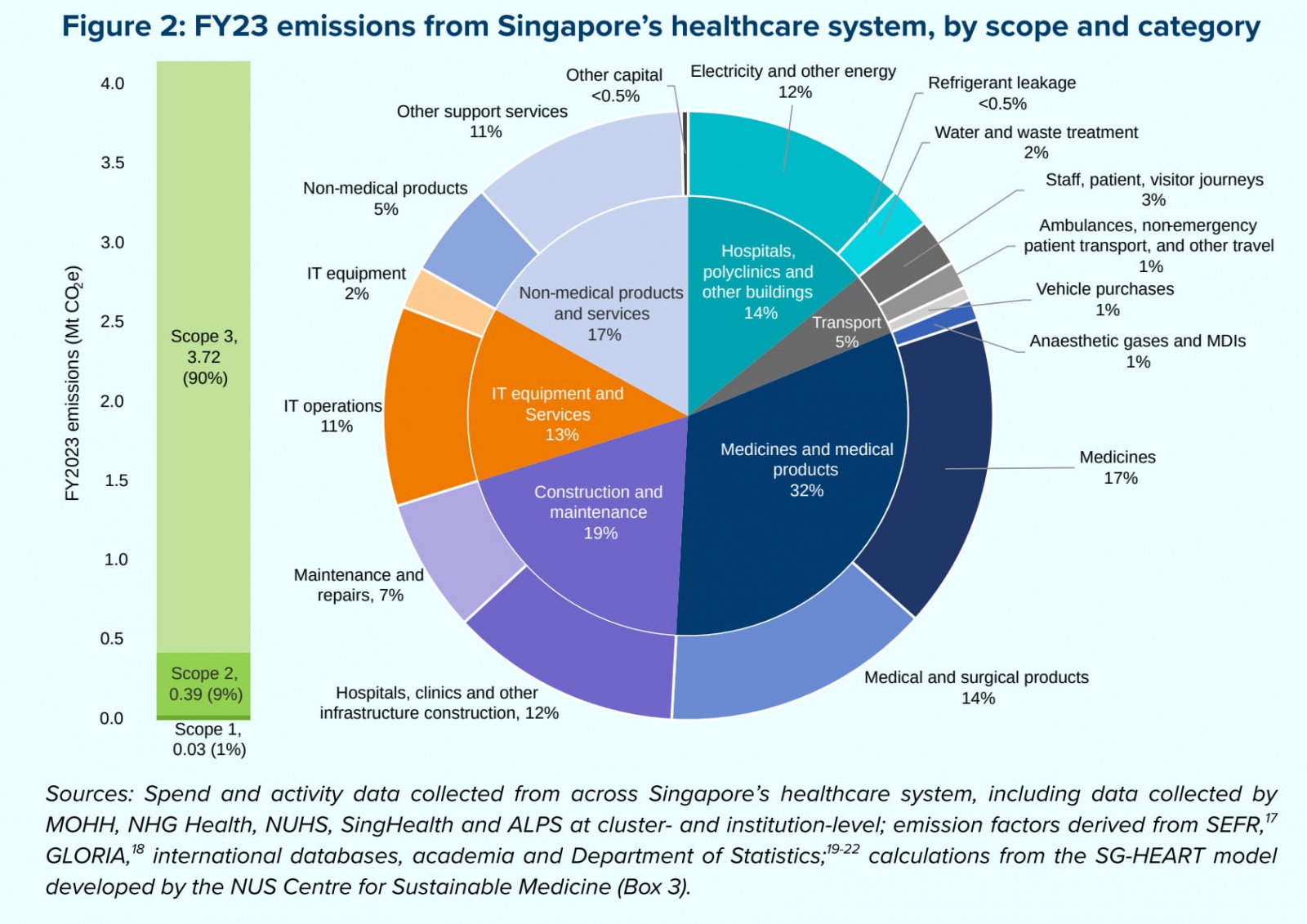
Singapore’s healthcare carbon footprint per person exceeds the global average, says Senior Minister of State Tan Kiat How. (Photo: CoSM)
Singapore has released its first report on carbon emissions from the healthcare sector, revealing that hospitals and clinics emit 4.1 million tons of CO₂ equivalent annually — nearly 7% of the nation’s total emissions, higher than the global average.
More than 30% of these emissions come from the production and use of pharmaceuticals and medical supplies, making them the single largest contributor across the healthcare value chain.
Aging population drives higher healthcare emissions
The study, released on Sept. 17 by the National University of Singapore (NUS) and the Ministry of Health (MOH) during a sustainability forum co-hosted with the World Health Organization (WHO), found that Singapore’s per-capita healthcare emissions are above the global average, on par with Japan and South Korea. However, the country’s overall healthcare carbon footprint remains 20% lower than other developed nations.
Senior Minister of State for Health Tan Kiat How noted that Singapore’s rapidly aging population, coupled with greater demand for specialized care and higher healthcare standards, is pushing up per-capita emissions.
According to the report, the carbon output of hospitals and clinics is equivalent to the electricity usage of 1.4 million households and nearly 7% of national emissions in 2022 — exceeding the global average of 4.4% and outpacing the combined emissions of global shipping and aviation.
From a value-chain perspective, pharmaceuticals and medical supplies accounted for 32% of emissions, including items such as bandages, thermometers, and asthma inhalers. High-impact anesthetic gases like desflurane and nitrous oxide also contribute disproportionately to emissions.
Construction and maintenance of healthcare facilities made up 19%, non-clinical services such as labs, laundry, cleaning, and catering 17%, electricity, water, and medical waste incineration 14%, digital infrastructure 13%, and transport 5%.

Medicines and medical supplies make up 32% of Singapore’s healthcare emissions. (Chart: Delivering quality care sustainably in Singapore)
Pharmaceuticals pose key challenge to net-zero goals
Nick Watts, Director of the NUS Centre for Sustainable Medicine (CoSM), stressed that the healthcare sector cannot realistically achieve net zero because most medicines are petrochemical-based. Instead, he recommended focusing on cutting emissions from other areas and reinvesting the savings into healthcare system improvements.
Examples include the National University Hospital (NUH), which doubled plastic recycling by segregating recyclables from medical tools and supplies, and the Institute of Mental Health, which sources 20% of its electricity from solar power.
The CoSM model quantified emissions from all public and private healthcare institutions in Singapore using over 19,000 data points, providing more detailed insights than previous studies. Watts emphasized that Singapore’s per-capita healthcare emissions are not as high as earlier research suggested and are certainly not the world’s highest.
Source: MOH, The Straits Times, Zaobao
.jpg)
